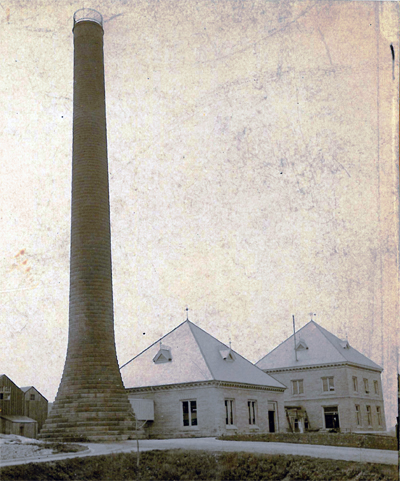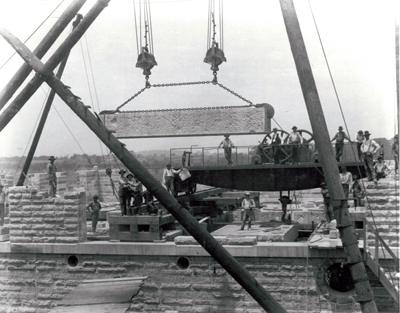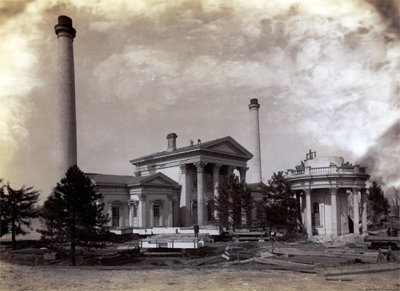Home / Pump Station No. 2
Pump Station No. 2
Though built during the height of the steam era, Charles Hermany’s design for Pumping Station No. 2 allowed for immense future growth he could not foresee.
 Planning the New Pump Station
Planning the New Pump Station
The 1880s became a prosperous decade for Louisville; manufacturing, commerce and the population all experienced unprecedented growth. With growth came the need for more water. Louisville Water’s ability to keep up with the demand became strained nearly to the breaking point. A new pump station was sorely needed.
Building a major new pump station is a multifaceted project which in this case required years of preparation.
The Floods of 1883 and 1884: A Blessing in Disguise
With the new pumping station in the planning stages Louisville experienced its worst floods ever. The floods of 1883 and 1884 inundated the 1860 pump station and for several days unable to pump water. It was quickly decided that the new station had to be built on higher ground by building a new embankment five feet higher than the crest of the 1884 Flood.
Jacob Bickel, a local contractor, built the 62,000-cubic-foot embankment for $15,500. It took a total of two years to create, and then another two years for it to settle before work began on constructing the boiler house and pump station.
 Building the Station
Building the Station
When the bids were opened one came in at $70,000 less than the next lowest bidder. As it turned out, the New York firm Sooy, Smith & Co. miscalculated construction costs. Realizing their before they did not sign the contract losing the $6,000 deposit; nearly $154,000 in today’s money.
The project had to be rebid. This time all the estimates came in too high. The board decided Charles Hermany, Louisville Water’s chief engineer, would oversee all of the work. Hermany, the optimist, was quoted as saying “this work, of course, entails a good deal of care and trouble, but we will come out all right.”
Work on the pumping station began in 1888. It took five years to complete.
 Weather Slows Construction
Weather Slows Construction
Over the course of construction, the weather rarely cooperated.
For two years in a row, 1888 and 1889, heavy rains and flooding slowed down the construction.
Inclement weather struck again in 1890 – this time in the form of a tornado. No damage was done to the new pumping station, but the storm knocked over the water tower. This required immediate attention to repair. The pumps inside Pumping Station No. 1 could not work without the standpipe inside the tower. After completing the emergency repairs work resumed on the new station.
The Boiler House
The boiler house included three Belpaire boilers, each capable of producing 250 horsepower. This type of boiler, designed in 1864, was primarily used in locomotives. It is easily identified by its square fire box, which improved steam production.
 The Hermany-Leavitt Steam Pump Engine
The Hermany-Leavitt Steam Pump Engine
The gem of the new pumping station was the Hermany-Leavitt steam pump engine. Louisville Water’s Chief Engineer, Charles Hermany, worked with E. D. Leavitt, then the most famous steam engine designer, to design a new pumping engine. They not only created the most efficient steam pumping engine, but they also designed it to be extremely durable and extra heavy to prevent breakage.

